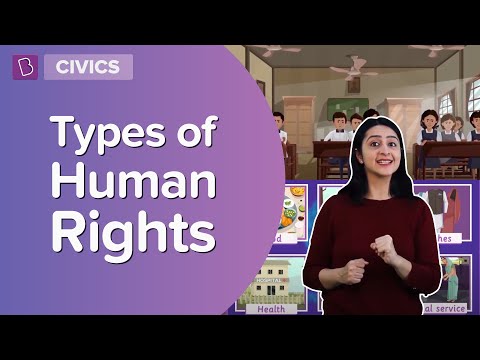Have you ever wondered why we need a Constitution or been curious about how the Constitution got written or who wrote it? In this chapter, you will get the answers to these questions. Also, you will learn the key features of the Indian Constitution. CBSE Notes Class 8 Civics Chapter 1 begins with a discussion of the principles that underlie a liberal constitution, and subsequently, key features of the Indian constitutions are elaborated upon in detail.
CBSE Notes Class 8 Civics Chapter 1 – The Indian Constitution
Society has constitutive rules that make it and differentiate it from other kinds of societies. In large societies in which different communities of people live together, constitutive rules are formulated through consensus, and in modern countries, this consensus is available in written form, which we call a Constitution.
Why Does a Country Need a Constitution?
All democratic countries are likely to have a Constitution, but on the other hand, it is not necessary that all countries that have a Constitution are democratic. The Constitution serves several purposes as listed below.
- A Constitution tells us what the fundamental nature of our society is.
- A Constitution helps serve as a set of rules and principles that all persons in a country can agree upon as the basis of the way in which they want the country to be governed.
3 Significant Reasons Why We Need a Constitution
- In democratic societies, the Constitution often lays down rules that guard against the misuse of authority by our political leaders.
- The Constitution ensures that a dominant group does not use its power against less powerful people or groups.
- The Constitution helps to protect us against decisions that could have an adverse effect on the larger principles that the country believes in.
For more information on Constitution of India, watch the below video

The Indian Constitution: Key Features
A group of 300 people became members of the Constituent Assembly in 1946 and had written India’s Constitution. While writing the Indian Constitution, these members kept in mind the different communities who speak different languages, belong to different religions, and have distinct cultures.
Listed below are the key features of the Indian Constitution.
1) Federalism
This refers to the existence of more than one level of government in the country. In India, we have governments at the state level, at the centre and Panchayati Raj at the village level. The Constitution contains lists that detail the issues that each tier of government can make laws on. In addition, the Constitution also specifies where each tier of government can get the money from, for the work that it does. All persons in India are governed by laws and policies made by each of these levels of government.
2) Parliamentary Form of Government
The people of India have a direct role in electing their representatives. Also, every citizen of the country, irrespective of his/her social background, can contest in elections.
3) Separation of Powers
There are 3 organs of government:
- The legislature: refers to elected representatives by the people.
- The executive: is a smaller group of people who are responsible for implementing laws and running the government.
- The judiciary: refers to the system of courts in India.
Each organ mentioned above acts as a check on the other organs of government. This ensures the balance of power between all three.
4) Fundamental Rights
The Constitution guarantees the rights of individuals against the State as well as against other individuals. It also guarantees the rights of minorities against the majority.
The Fundamental Rights in the Indian Constitution include:
- Right to Equality
- Right to Freedom
- Right against Exploitation
- Right to Freedom of Religion
- Cultural and Educational Rights
- Right to Constitutional Remedies
For more information on Types of Human Rights, watch the below video

Fundamental Rights have two-fold objectives:
- Every citizen must be in a position to claim fundamental rights.
- Fundamental rights must be binding upon every authority that has got the power to make laws.
The Constitution also has a section called Directive Principles of State Policy which ensures greater social and economic reforms and serve as a guide to the independent Indian State to institute laws and policies.
For more information on Socialist Directive Principles and Fundamental Duties as Citizens of India, watch the below video


5) Secularism
A secular state is one in which the state does not officially promote any one religion as the state religion.
We hope CBSE Notes for Class 8 Civics helped you in your studies. Keep learning and stay tuned for more updates on CBSE and NCERT. Download BYJU’S App and subscribe to the YouTube channel to access interactive Maths and Science videos.
Frequently Asked Questions on CBSE Class 8 Civics Notes Chapter 1 The Indian Constitution
What is the name of Indian Constitution book?
The Constitution of India (IAST: Bhāratīya Saṃvidhāna) is the supreme law of India
How many pages are present in The Indian Constitution.
The Indian Constitution consists of totally 416 pages.
How many articles are present in the Indian Constitutiton?
There are total 395 articles present in The Indian Constitution.
these notes are very very helpful
thanks a lot